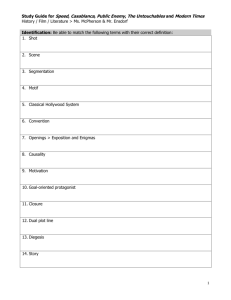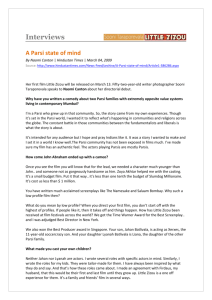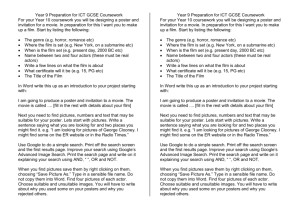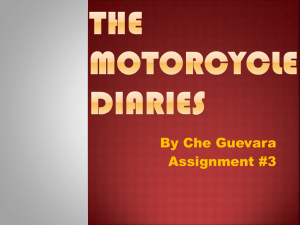Film Visual Design: Décor, Lighting, Acting & Effects
advertisement
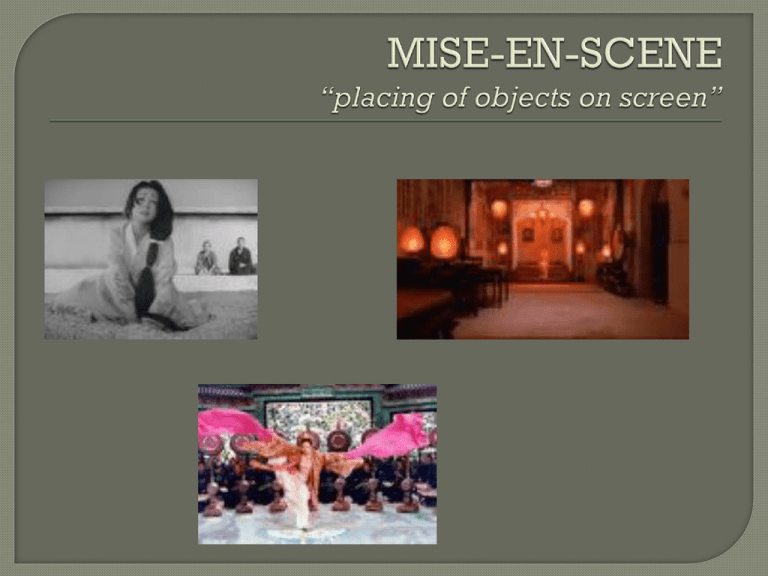
DÉCOR/Visual Design Usually used to combine foreground action, often actors in conversation, with a background often shot earlier, on location. Can be used to illustrate symbolic meaning (e.g. The Sixth Sense) As part of the narrative organization (e.g. Malcolm X) Psychological mood and tone (to augment and intensify the emotion) More of a focus on brightness levels Film noir a specific style of film that creates a darker, moodier look Three-point lighting-The standard lighting scheme for classical narrative cinema. In order to model an actor's face (or another object) with a sense of depth, light from three directions is used, as in the diagram to the right. Light on screen is cast by one or more specific sources Practical light-actual light on the set that works for the exposure of the film Stresses purely pictorial or visual values that may be unrelated to strict concerns about source simulations Many films use both Technical acting-focused on a more traditional dramatic mode similar to the theatre focused more on body language and facial expression Method-focused more on inner emotions and personal experience (a more modern style) Typage-refers to the selection of actors on the basis that their facial or bodily features readily convey the truth of the character the actor plays Stars (usually lead actors/actresses who receive top billing) Supporting Actors (secondary and supporting roles in films) Extras (performers who appear incidentally or in the background) The Star Persona – collective screen personality that emerges over a star’s career Personality Stars – stars whose personality changes only slightly from film to film (Tom Cruise, Julia Roberts, John Wayne, Bette Davis) Character Stars – plays a greater range of roles and is known for being “lost” in the character (Robert DeNiro, Dustin Hoffman, Meryl Streep, Christian Bale) 4 different ways to accomplish this: Emphasizing unique body language: - John Wayne’s walk in The Shootist (1976) - Charlie Chaplin Regulating Intensity of Emotion: - how does the film regulate expression? - Chaplin’s face at the end of City Lights Maximalist Performance Style: - going to the opposite extreme (not naturalistic or plausible, but over the top) - either very emotional or very unemotional: Al Pacino vs. Clint Eastwood Typage: - performers are visually stylized, often to the extreme Visual Mediation of Performance: - connecting a performer to additional visual elements within the film - Citizen Kane A deliberate distortion imposed by artists upon the linear perspective cues within a model or painting Used to create effects by erasing visual information from the frame (Gary Sinise’s legs in Forrest Gump) Building entire images inside the computer and then integrating these with live-action photography (The Lord of the Rings, Jurassic Park, etc.)



